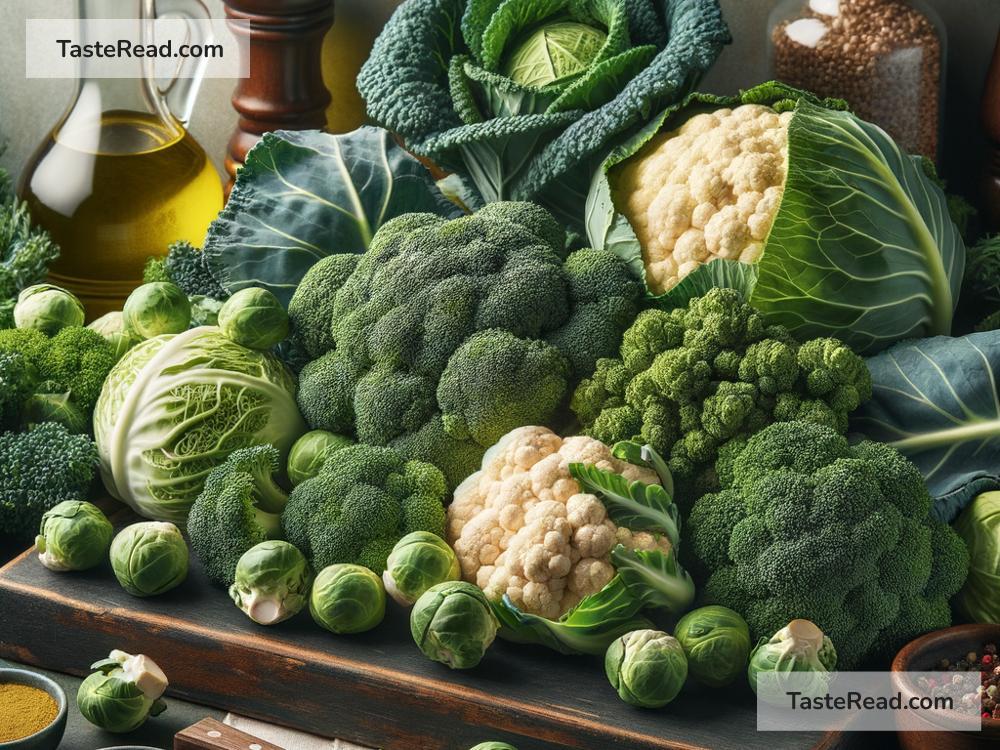Understanding the Role of Glucosinolates in Health
Have you ever wondered why vegetables like broccoli, kale, and cabbage are so good for you? They don’t just taste great (well, for many people), but they’re also packed with compounds that can keep your body healthy. One group of natural substances found in these veggies is called glucosinolates, and they play a fascinating role in promoting good health.
In this article, we’ll take a closer look at glucosinolates, what they do, and why eating more of these veggies might be a smart decision for your health—all explained in simple terms.
What are Glucosinolates?
Glucosinolates are natural compounds found in plants, especially in vegetables belonging to the cruciferous family. This includes broccoli, Brussels sprouts, cauliflower, kale, cabbage, mustard greens, and turnips. Think of glucosinolates as tiny helpers inside these vegetables, giving them their unique flavors, smells, and health benefits.
Ever noticed the slightly bitter or pungent taste of some cruciferous vegetables? That’s partly because of glucosinolates. They’re responsible for the flavors we associate with these superfoods, but their role goes far beyond taste—they’re key to helping protect your body.
How Do Glucosinolates Work?
Glucosinolates don’t act alone. When we chop, chew, or cook vegetables, glucosinolates go through a chemical transformation. They break down into smaller molecules called isothiocyanates and indoles. These smaller molecules are where the real magic happens—they’re the ones that may help defend your body against illnesses.
Scientists have studied these breakdown products for years because they have properties that can protect cells, reduce inflammation, and support the immune system. Some researchers even believe they may play a role in lowering the risk of certain diseases, including cancer.
Glucosinolates and Cancer Prevention
One of the most exciting discoveries about glucosinolates is their possible link to cancer prevention. How does that work?
Here’s the science in simple terms: The breakdown products, like isothiocyanates, can help activate the body’s natural detox system. They encourage your cells to get rid of harmful chemicals and waste. By doing this, they help protect DNA—the blueprint for all the cells in your body—from damage.
Additionally, these compounds may slow the growth of cancer cells or even stop them from spreading. Several studies suggest that people who eat more cruciferous vegetables may have a lower risk of developing cancers such as lung, colorectal, stomach, and breast cancer.
While researchers are still studying exactly how glucosinolates and their byproducts work, it’s clear that including these veggies in your diet is a smart move for overall health.
Other Health Benefits
Glucosinolates aren’t just about cancer prevention. They also have other health perks:
1. Support for Heart Health
Studies suggest that eating cruciferous vegetables may benefit heart health. The compounds help reduce oxidative stress (damage caused by harmful molecules in the body) and lower inflammation, both of which can lead to heart disease.
2. Boost for the Immune System
Glucosinolates support the immune system by encouraging cells to respond quickly to threats like infections.
3. Improved Digestion
Some glucosinolate byproducts can positively influence gut health, supporting digestion and ensuring the gut microbiome stays balanced. A healthy gut is important for nutrient absorption and overall wellness.
Cooking and Preparing Cruciferous Vegetables
You might be wondering—do cooking or boiling vegetables destroy glucosinolates? The answer is both yes and no.
Heat can sometimes reduce the levels of glucosinolates in veggies, but that doesn’t mean you need to eat everything raw. Many cooking methods, like steaming or sautéing, can retain most of the glucosinolate benefits while making the vegetables tastier and easier to chew.
If you’re a fan of raw veggies, salads that include kale, shaved Brussels sprouts, or thin slices of cabbage are excellent ways to get glucosinolates. If you prefer cooked dishes, lightly sauté or steam the veggies to preserve their nutrients.
How Much Should You Eat?
There’s no specific rule about how much cruciferous vegetables you should eat to get the health benefits of glucosinolates. But experts agree that adding these veggies to your meals regularly is a great way to keep your diet balanced. Aim for a variety of cruciferous vegetables—each one offers a unique combination of nutrients alongside glucosinolates.
For example:
– Add broccoli to stir-fries or as a side dish.
– Snack on raw cauliflower with a dip.
– Toss kale into soups, smoothies, or salads.
If you’re not yet a fan of these veggies, try experimenting with recipes to find ways you love them. Over time, your taste buds may learn to appreciate their earthy flavors.
Final Thoughts
Glucosinolates are natural compounds that may play a huge role in protecting your health. Found in cruciferous vegetables, they are linked to cancer prevention, heart health, immune system support, and digestive benefits. These compounds work their magic by breaking down into helpful molecules when you eat or prepare the veggies.
So, next time you see broccoli or cabbage on your plate, think of them as more than just vegetables—they’re tiny powerhouses stocked with glucosinolates that can boost your well-being.
Eating a variety of cruciferous vegetables regularly is a delicious and simple way to support your health. Whether you enjoy them raw or cooked, these veggies are worth making a regular part of your diet.
Stay healthy, and happy eating!


